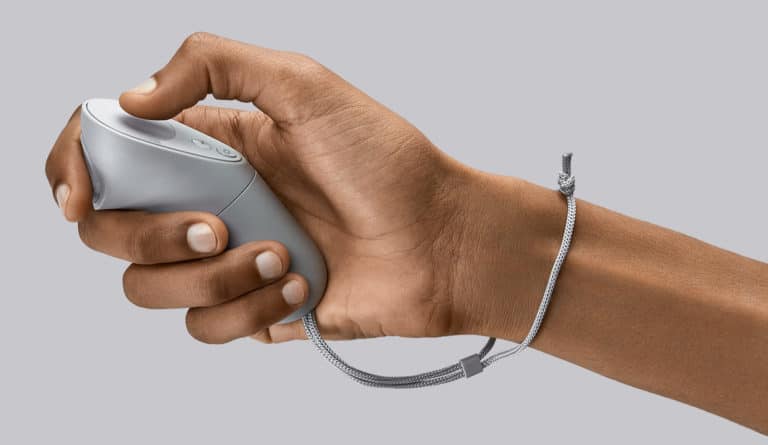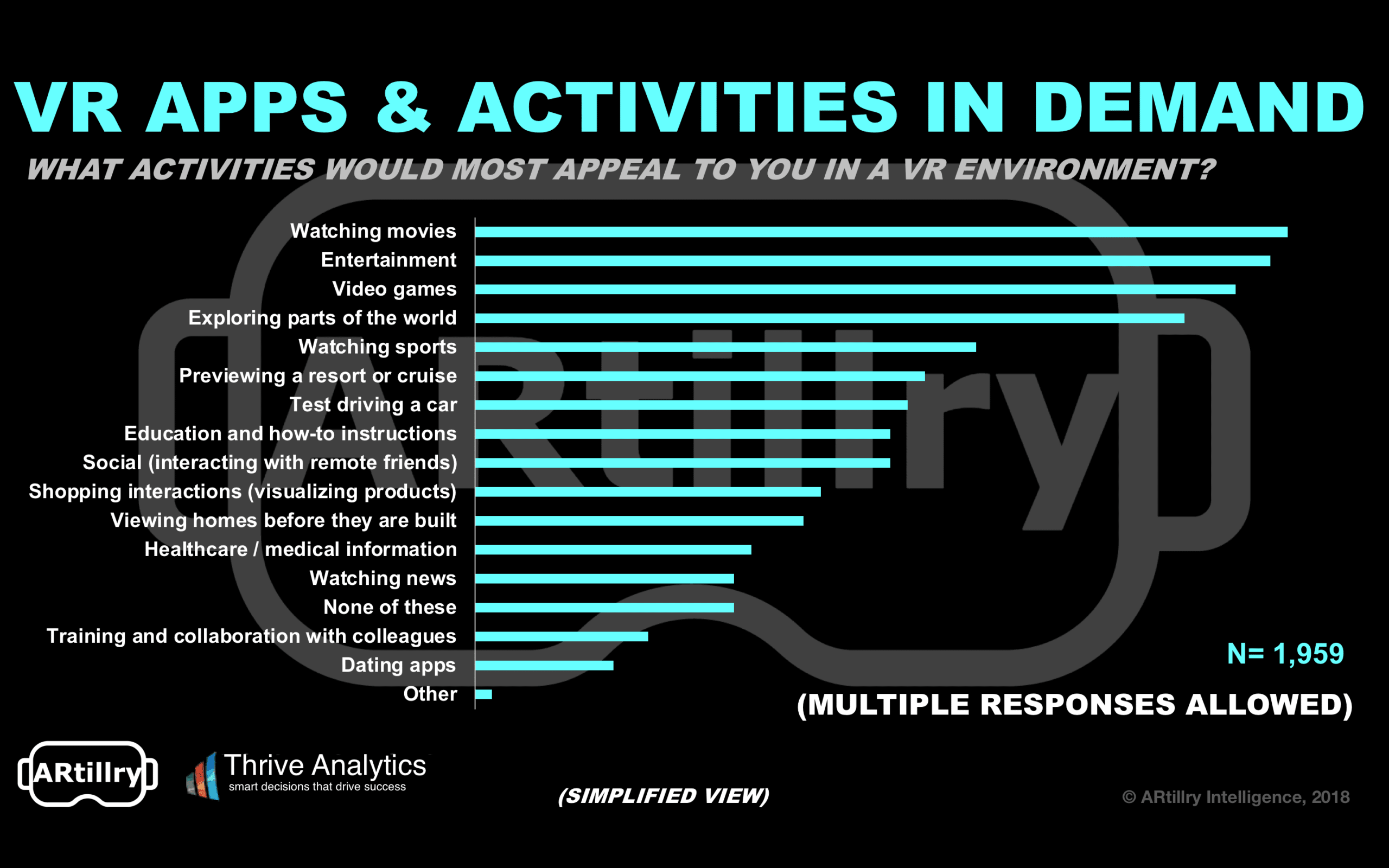
“Behind the Numbers” is ARtillry’s series that examines strategic takeaways from its original data. Each post drills down on one topic or chart. Subscribe for access to the full library and other knowledge-building resources.
When examining consumer VR sentiments, one valuable exercise is to ask what they want to do most in VR. We posed this question to 1,959 consumers (VR users and non-users) in our recent survey with Thrive Analytics. And the high-level takeaway: It’s once again all about content.
The top result for desired VR activities was watching movies (47 percent), followed by other forms of lean-back entertainment (46 percent), interactive video games (44 percent), exploring parts of the world (41 percent), watching sports (29 percent) and test-driving a car (24 percent).
Interestingly, these results are a mix of “native” VR activities (fully immersive 3D) and standard 2D content that has been brought into a VR environment (such as watching movies). The fact that the latter represents the most popular activity is telling of the very early stage in which VR remains.

Think Native: VR-First
Eventual VR successes will design native experiences (AR too). In other words, they can only exist in VR. They’ll apply unique capabilities to immerse users in 3D sensory experiences. This will represent a learning curve for developers, just like we saw with native smartphone app design.
Meanwhile, activities that ARtillry believes are under-rated in these results include employee training and collaboration, social interaction, education and shopping. These are areas we’re examining and project strong long-term use cases for VR, despite lower reported interest today.
As for more altruistic VR applications – those that serve a greater good rather than a personal need – respondents rated medical training as the top use case. That was followed by education, communications for the elderly and mental therapy/conditioning. None of these were surprising.
Bottom line: these results should be considered when evaluating VR’s points of intersection with existing business. For example, online travel, car shopping, and sports broadcasters should examine such consumer sentiments when designing product road maps and long-term evolution.

Brass Tacks: “Will You Buy?”
Taking everything into consideration, all respondents were asked about the likelihood of purchasing a VR headset in the next year. This is perhaps a more telling sentiment than their interest levels – a point-blank feeling on their probability of an actual near-term purchase.
These results paint a less favorable picture for VR. 13 percent of respondents reported either “likely” or “extremely likely” chance of VR ownership over the next year. And 72 percent reported either “unlikely” (14 percent) or extremely unlikely (58 percent) chance of ownership
This more sobering indication of near-term consumer VR growth further compels the adoption accelerants we examined recently. VR Arcades and theme parks will accomplish this to some degree as will standalone VR, which ARtillry Intelligence collectively calls “gateway drugs.”

All About Timing
ARtillry Intelligence also believes VR adoption will start slow, then hit a tipping point and suddenly accelerate. That will happen when a critical mass of consumers gets that initial “first taste” of VR. Interest levels will grow among those consumers… and influence others in their social graphs.
That will happen in tandem with growing content libraries, killer apps, and the forward march of Moore’s Law. The latter will drive compelling devices that are faster, cheaper and untethered. All of these factors will converge to push VR’s mainstream penetration, but it will take several years.
“The thing about revolutions is they feel like they happen all at once,” said Unity Global Head of VR/AR Brand Solutions, Tony Parisi at AWE. “But that’s not the way it happens. It’s a series of small changes… little seemingly innocuous things that add up to finally turn into to a tipping point.”
For a deeper dive on AR & VR insights, see ARtillry’s new intelligence subscription, and sign up for the free ARtillry Weekly newsletter.
Disclosure: ARtillry has no financial stake in the companies mentioned in this post, nor received payment for its production. Disclosure and ethics policy can be seen here.
